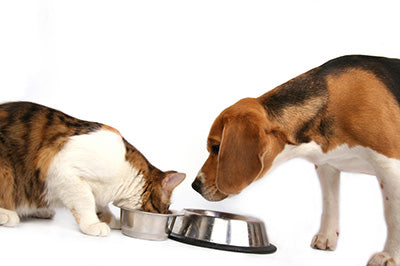Ask A Trainer: Dog Biting & Barking Around Food

Choosing a Healthy Dog Food is always a great start. If you've ever wondered "Why My Dog Bites Around Food", this article offers a great explanation.
By Judit Arroyo
Question: How can I get my Chihuahua to stop biting and barking inappropriately (especially around food)? I have had this little dog since he was 8 weeks old, but I do not know how to break him of these two nasty habits. He has had tons of doggie training, but we’re still having issues! Please help. We’re desperate! – “Maximillion1”, via email
Answer: Don’t panic! Biting and barking are often two problematic behaviors that small dogs may develop. To begin, you were correct in using the word “habit” when describing your dog’s behavior. When a dog is allowed to consistently rehearse any behavior, it may turn into a habit. This is extremely important to recognize in order to develop an effective training strategy. As you know, habits are hard to break. Take smoking, for example. It can take several months or even years to stop smoking, so you should not be discouraged if your dog doesn’t change overnight.
The first step in addressing your Chihuahua’s problems is to manage him. This means you must prevent him from rehearsing the unwanted behaviors. Find the triggers that make your dog either bark or bite (we already know that Dog Food is a trigger). Dog Toys can also sometimes be a trigger and it is important to keep dog toys separate from human toys.
Once the triggers are identified it will be easier for you to prevent them and use them to your advantage when training. You will also be able to better predict his bark or bite and either stop or re-direct him to a more appropriate response.
We become more effective in dealing with our dogs when we think about what we want them to do instead of investing so much energy in trying to teach them what not to do. Because dog training is interconnected, having a prior training history with your dog will aid the process. Think about what you want your dog to do (instead of biting or baking) and begin training your dog to perform that behavior.
Remember that it will take a lot of work and guidance to develop a new habit that is as self-reinforcing as the old one. Develop a plan of action so that you know what to ask your dog to do and so your dog can learn what is expected of him.
Here is a suggested action plan for resource guarding (barking/biting in the presence of food):
1. Manage the situation to prevent further rehearsal.2. Identify all the triggers.
3. Make your dog feel comfortable having you around his food.
4. Tether your dog next to an empty Dog Food Bowl.
5. As he beings to show interest in the bowl walk toward him (approach him from the side because this is less threatening) and as soon as he looks at you toss a few treats and back up. Repeat this a few times each day and gradually decrease the distance as his comfort zone increases.
6. Your dog is learning that there is no need to “protect” his food in your presence. Essentially your dog is learning to look up at you (instead of barking/biting) and he is beginning to anticipate a treat each time you approach.
7. Teach your dog a new habit such as “trade” or “leave it” as well.
The same idea applies to barking. Once you have identified what makes your dog bark teach him to redirect his behavior from barking to something more appropriate. For example, if your dog has previously learned “leave it” you can have him relinquish on cue. Every time he sees or hears the trigger that starts him barking, cue your dog “leave it”. As soon as he responds to you, reward him with lots and lots of treats.
Eventually your dog will learn that it’s more reinforcing to turn away and look at you rather than bark at something else. Remember that it takes time to develop a new habit so you will need to rehearse these new skills and reward your dog consistently with quality Dog Treats and Dog Toys for good behavior.
Don’t forget that your dog has had a lot of time to rehearse unwanted behaviors like biting and barking so always reinforce him when he performs. You can help guide your dog toward success by using management tools including your Leash and Dog Crate when necessary. These tools can help you prevent your dog from rehearsing unwanted behaviors and so that you can teach him more appropriate ones. Bottom line, when committing to solve any problematic behavior do it with a positive attitude and lots of patience.
Speaking of chewing and barking (generally unwanted behavior): many people get upset when their dog chews on things. This is actually normal and there are ways to address this in a positive, healthy way. Read our article Puppies That Chew: Dealing With This Normal Behavior. If your dog barks non-stop, you may find our dog tip: Training Talk: Excessive Barking to be of help.
Judit Arroyo is the founder of Canina Dog Training in Chicago. She began her training career at age 17 and has developed a specialized interest in working with defensive dogs. Judit is active in competitive obedience and agility sports as well as Therapy Dogs International certification. Additionally, she is an AKC Canine Good Citizen evaluator.
Ms. Arroyo has a BA from DePaul University and is active in community outreach programs including Chicago Canine Rescue (CCR), New Leash on Life (NLOL) and has led fundraising efforts for Cook County Animal Care & Control. Judit serves as a Program Leader for Sit Stay Read! and is currently developing their dog training program.
